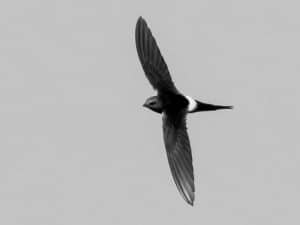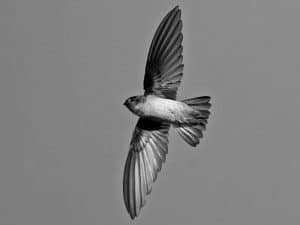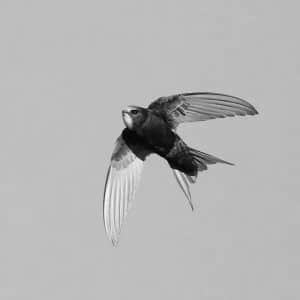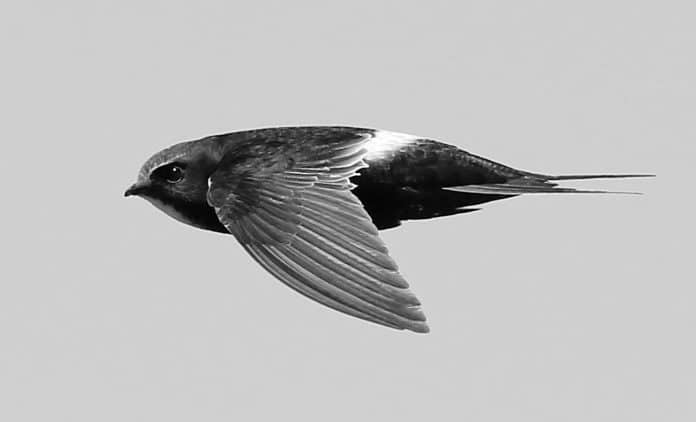Introduction to the White-Rumped Swift
The White-Rumped Swift (Apus caffer) is a small bird species that can be found in Tanzania. This swift is known for its distinctive markings and unique behavior. In this article, we will explore the habitat, physical characteristics, and behavior of the White-Rumped Swift in Tanzania, as well as provide tips on how to identify it in the field.
Habitat and Distribution of the White-Rumped Swift in Tanzania

The White-Rumped Swift is primarily found in the highlands of Tanzania, where it prefers open areas such as grasslands, savannahs, and open woodlands. This species is known to inhabit altitudes up to 3,000 meters. They are often seen flying in small groups, gliding effortlessly through the air.
Physical Characteristics and Distinctive Markings of the White-Rumped Swift
The White-Rumped Swift is a small bird, measuring about 12 centimeters in length. It has a slender body and long wings, which enable it to perform agile aerial maneuvers. One of the most striking features of this species is its white rump, which contrasts with its dark brown or black body. The wings are pointed and narrow, and the tail is slightly forked.
Identifying the White-Rumped Swift in the Field
When trying to identify the White-Rumped Swift in the field, it is important to focus on its distinctive markings. Look for the white rump, which is visible when the bird is in flight. The dark brown or black body and long wings are also key features to look out for. Pay attention to the bird’s flight pattern, as White-Rumped Swifts are known for their fast and agile flight.
Other Similar Bird Species in Tanzania and How to Distinguish Them from the White-Rumped Swift
While observing birds in Tanzania, it is possible to come across other species that may resemble the White-Rumped Swift. One such species is the African Black Swift (Apus barbatus). Although the African Black Swift shares a similar body shape and flight pattern with the White-Rumped Swift, it can be distinguished by its entirely dark plumage, lacking the white rump.
Behavior and Diet of the White-Rumped Swift

The White-Rumped Swift is a highly skilled flyer, spending most of its time in the air. It is known for its acrobatic flight, often performing intricate maneuvers and rapid changes in direction. These swifts feed on flying insects, such as flies, beetles, and ants, which they catch mid-air using their wide gape and sharp beak.
Conservation Status and Threats to the White-Rumped Swift in Tanzania
The White-Rumped Swift is listed as a species of least concern on the IUCN Red List. However, like many bird species, it faces threats to its habitat and population. Deforestation, agricultural expansion, and climate change are some of the major factors that can negatively impact the White-Rumped Swift. Conservation efforts are crucial to ensure the long-term survival of this species.
The Importance of Birdwatching in Tanzania for Conservation Efforts
Birdwatching is not only a popular recreational activity but also plays a vital role in conservation efforts. By observing and documenting bird species, researchers and conservationists can gather important data on population trends, distribution, and habitat preferences. Birdwatchers in Tanzania can contribute to these efforts by reporting sightings and participating in citizen science projects.
Birdwatching Tips and Techniques for Spotting the White-Rumped Swift

To improve your chances of spotting the White-Rumped Swift in Tanzania, it is advisable to visit its preferred habitats, such as open grasslands and woodlands. Look for areas with a high insect population, as these swifts rely on insects for food. Be patient and observant, as the White-Rumped Swift is often seen flying at high speeds. Using binoculars or a spotting scope can greatly enhance your birdwatching experience.
Conclusion and Final Thoughts
The White-Rumped Swift is a fascinating bird species found in Tanzania. With its distinctive markings and agile flight, it is a delight to observe in the field. By understanding its habitat, physical characteristics, and behavior, birdwatchers can easily identify the White-Rumped Swift and contribute to its conservation. Remember to respect the natural environment and follow ethical birdwatching practices to ensure the well-being of these remarkable birds. Happy birdwatching!

































